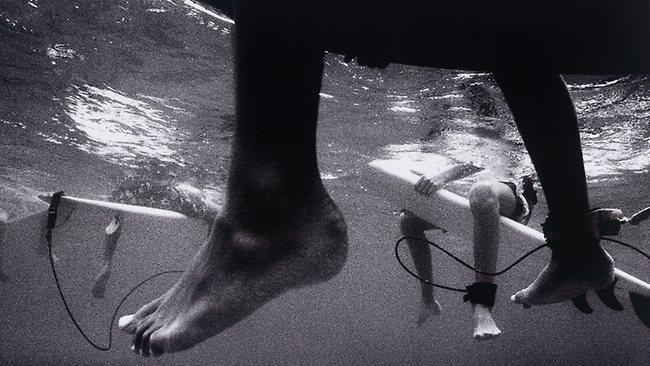Liquid truth
PHILOSOPHY began with the hypothesis that the world was made of water. When students encounter this idea, they tend to think it odd, if not naive.

PHILOSOPHY began with the hypothesis that the world was made of water. When students in introductory courses at university encounter this idea, put forward by Thales in the 6th century BC, they tend to think it odd, if not naive; but this is because they are looking through the wrong end of the telescope.
Hindsight can be a useful tool, but is no substitute for historical imagination, which is the ability to understand what things looked like from the perspective of another time.
The great originality of Thales lay in his attempt to give a rational and material account of the world of being, as distinct from a mythological or religious one. And he instinctively felt the first step was to identify some single and common substance behind all the multiplicity and change that characterise the world of human experience. He chose water because it was manifestly capable of transformation from a liquid to a solid or gaseous state.
Pre-rational cultures can go on forever, revolving in the same orbit. But once licence is given to the mind to think for itself, everything begins to change: ideas proposed by one man are criticised by another; flaws are detected and new hypotheses are put forward. Some of Thales's successors suggested alternative definitions of the primary substance, while others, after a suggestion by Pythagoras that the key to reality was to be found in numbers, changed from a material or physicalist to a formalist emphasis.
Empedocles, the philosopher from the Greek city of Akragas in Sicily, in his attempt to reconcile the material and formalist approaches, as well as to account for the central formal problem of how unity turns into multiplicity and vice versa, defined water as one of four elements that make up the cosmos, the others being fire, earth and water. This turned out to be one of the most resonant cosmological ideas in history, giving rise to an endless series of analogies: the four elements are matched by the four humours in the body, the four seasons of the year, the ages of man, and so on.
The idea that individuals -- both minds and bodies -- can be defined by their affinities with fire (choleric), air (sanguine), earth (melancholy) or water (phlegmatic) in various proportions, has played a central part in our understanding not only of personality but of medicine itself. And it still colours our experience both of nature and, perhaps less obviously, pictures of the natural world.
There is, for example, no better way of understanding Turner than to see him as a painter of fire, air and water who eliminates the grounding element of earth wherever he can, and whose most dramatic compositions are simply meditations on the antithetical elements of fire and water; while Constable, in contrast, is drawn to earth and water, to the way that earth is vivified by humidity and gives birth to a profusion of organic life.
In the classical landscape and especially in the work of Claude Lorrain, the elements are combined in the harmonious balance which, in the case of the humours, was held to be the formula of a healthy constitution. In the landscapes of his Dutch contemporaries, the emphasis is rather on earth, air and water -- with low horizons and wide vaporous skies -- than on the warmth of the sun; to walk from a gallery of classical landscapes to one of Dutch is like passing from summer to autumn, or the sudden greyness when the sun goes behind a cloud.
As the source of life itself, water gives life to landscapes, which can otherwise feel very barren. Its fluidity and variability animate the scene variously according to the particular nature of the water and its relation to the geology of the land, the earth element in the composition, as well the air, whose motion is sometimes suggested by its action on water, and fire, which it so beautifully reflects.
Such are some of the themes that come to mind in another small but thoughtful exhibition selected from the photographic holdings of the NGV. The title itself, Deep Water, evokes a world of metaphoric associations. We speak of someone being thrown in at the deep end, or of being out of their depth; we think of people as deep or shallow (interestingly, French has a word for deep, but not specifically for shallow).
The depth of water, as in Peter Henry Emerson's photograph of a man rowing home across a lake in the Norfolk Broads (1886) -- or rather, pausing from rowing, so that the surface of the water is still and silvery -- can be completely unknown, and this is part of its mystery. Is the rower suspended above a vast chasm of water, or floating on a shallow mere? At first sight there is no way of telling, although looking at the nature of the landscape around him makes the latter more probable.
Emerson evokes a world that feels boundless and almost mystical, but is devoid of threat. The ocean, on the other hand, is immensely, almost vertiginously deep, an effect beautifully, if implicitly captured by Frank Hurley in his picture of an iceberg (1913) floating like a sinister enchanted island in a dark marine expanse. Had Thales seen a sight like this, it would have looked indeed like water hardened into another material form.
Water is always mutable and always in motion, but that motion varies from the tides and waves of the sea to the subtle currents of lakes and the directional flow of rivers and streams. Francis Bedford's Pass of Llanberis, North Wales (c.1865) is a harsh wasteland through which a shallow stream runs in constant agitation over its rocky bed. Small in volume of water but intense in energy, this stream reminds us that the valley itself was carved out by the age-old action of flowing water.
The same can be said of William Bell's extraordinary photograph of the Colorado River winding through the Grand Canyon (1872), which one might mistake for a modern aerial photograph were it not for the rocky outcrop in the right foreground, giving a hint of the terrifying spur on to which the photographer must have ventured to take this picture.
Significantly, these images were not only records of the sublime spectacle of nature, but also scientific documents of geological phenomena in an age whose understanding of the earth and geological time had been drastically changed by new discoveries; but as we saw in the case of Eugene von Guerard, a contemporary, these scientific and poetic perspectives were not felt to be incompatible.
Images of rivers in visible movement recall another early philosopher, Heraclitus, who found in them the most concrete metaphor for the constant change and transformation we experience in the world around us. Two pictures by Paul Caponigro capture this movement particularly eloquently. In one, we see the flow of a river breaking over underwater rocks, but in the second and more mysterious work, a stream seems to run surprisingly quickly over flat terrain in the middle of a forest, surrounded by the bare branches of winter trees profiled against the mist.
The stillness of calm water, on the other hand, was taken by the later stoics as a symbol of the impassivity of the wise man's mind, undisturbed by the distractions and violence around him.
Waterfalls are the most dramatic examples of water in visible motion, here represented by the sublime spectacle of Ansel Adams's view in the Yosemite Valley (1940s) -- a wonderful subject for a photographer, as the falling water turns pure white against the dark shadows of the rocks and pines all around.
Humans are not conspicuous presences in most of the pictures in the show, and the several pictures that do include people swimming, lounging on boats or at the seaside appear almost incongruous as a result. At the same time, we can see that all activities connected with water, whether boating or swimming, have important connections to these deeper themes. And although we swim and sail today for pleasure, both have been and still can be associated with mortal peril.
There is some feeling of this every time we dive into a pool, and particularly into water that is cold or wild or in a lonely place. The sense of refreshment and renewal that we experience is intimately linked to the residual feeling of danger, of giving ourselves up to a hostile or at least foreign environment. Of all the pictures in which figures predominate, the complex symbolic associations of bathing are best captured in Andre Kertesz's shot of a man swimming underwater (1917): the camera has arrested his stroke at the moment the body is fully extended, the head is fortuitously almost invisible, and the dappling of light on the water emphasises the figure's submersion.
Water is always connected both with life and with death. One of the most fascinating photographs in the exhibition is a picture of the source of the Aveyron taken by the French Bisson brothers (c.1876). This was a subject drawn in the 18th century by Francis Towne (1781). The Greeks personified springs as nymphs, though river gods were male, and Gustave Courbet too, who was also drawn to the motif, saw them as analogous to the subject more explicitly painted in his Origine du monde (1866).
In the Bisson photograph, the emphasis is likewise entirely on the spring rather than the river. The watercourse, a muddy grey, merges into the tone of the surrounding rocks, while the spring, with its natural stone arch, forms a dark hole in the centre of the composition.
On a casual look it is easy to miss the human figure standing the middle ground, a minute black silhouette that emphasises the overwhelming size and monstrous power of the natural environment.
The most dramatic image of the threatening power of water and really the greatest and most moving work in the exhibition is Frank Hurley's shot of Ernest Shackleton and his men launching the James Caird from Elephant Island into the frozen waters of the Antarctic Ocean (1916). The title gives some idea of the immensity of the challenge before them: Setting out for South Georgia, 750 miles away, but the photograph is even more starkly eloquent.
The men had been trapped for months on ice floes since the loss of their ship and the epic voyage to South Georgia was the only hope for survival. As we know, they were successful, and brought help back to the remaining men, who sheltered under the hulls of overturned boats in an inconceivably hostile environment. But here, as they push their small boat out into a deceptively low swell, the sea seems as menacing as can be imagined, like the image of death that it is supposed to represent in the psychoanalytic interpretation of dreams.
Deep Water
NGV International, Melbourne, until September 11



